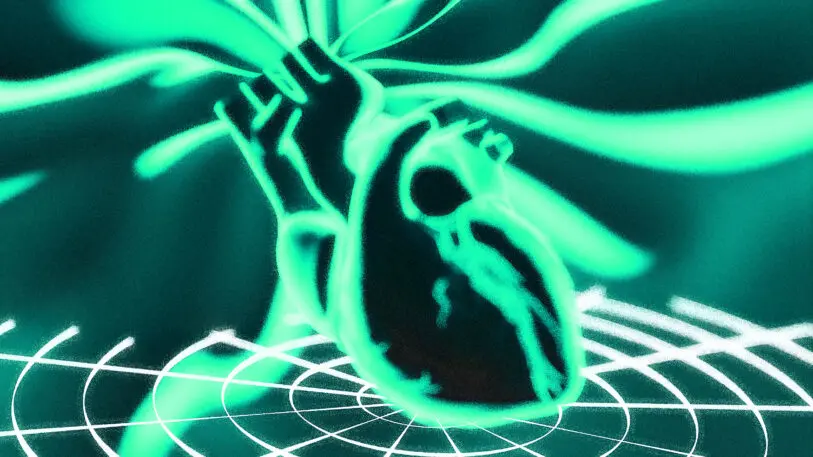For everything wrong in the world, heart disease remains the number one killer. Up to 20% of people will die specifically from a sudden cardiac death (SCD) alone. SCD is not a heart attack, which happens when arteries are blocked, but rather an electrical issue that stops the heart from beating properly.
SCD can strike seemingly out of nowhere. But a new AI developed by John Hopkins professor Natalia Trayanova, led by research scientist Dan Popescu (a former PhD student under Trayanova), can spot SCD well before it happens. A decade before, actually. The findings were published in a recent issue of Nature Cardiovascular Research.
You might read such a prediction as a Minority Report death sentence. Who wants to know what they’ll die from? But as Trayanova explains, predictive tools like this AI can change the way doctors treat their patients. And ultimately, they’ll help prevent deaths that humans couldn’t predict before.

“If a patient has less than 30% ejection fraction [doctors] add a defibrillator; if they don’t, they don’t,” Trayanova says. “That’s it.”
Given that 20% of people are still dying from SCD annually, clearly a lot of candidates for defibrillators are being missed. On the flip side, however, Trayanova points out that this 30% ejection fraction rule of thumb is also leading to a lot of people getting defibrillators who actually don’t need them. (One study found 23% of people who received these devices didn’t need them—with that number skyrocketing to 40% at some healthcare facilities.)
“It’s not fun living with that device,” Trayanova says. “It can discharge, components malfunction, and there are studies showing it increases mortality. It’s like a horse kicking you in the chest—it’s that painful.”
Trayanova’s lab built its AI to close the big prognostic gaps in SCD. To construct the system, her team trained a machine on 10 years of patient records from 156 people with heart conditions who agreed to share their medical information. They shared everything in their patient records, from MRIs of their hearts to 22 other pieces of potentially relevant information including race, weight, drug use, and hypertension.
By feeding all the MRI scans into a machine learning system, researchers were able to discern hidden patterns, such as how scar tissue and other components of someone’s heart make them predisposed to SCD. (Technically, a second AI was built to understand how smoking or other factors can impact this probability, too.) Then, after building their software, researchers validated their tool against patient data from 60 health centers across the U.S. The AI outperformed doctors in its diagnoses.
Trayanova’s AI model can offer a personalized estimate of having an SCD in any given year over a 10-year time frame. That allows a doctor to have a conversation with their patient about the best course of action moving forward. The AI also discloses its own certainty to the doctor. “You can say, ‘Okay, you’ll have a 50% probability to have [an SCD] in five years, but this is how certain I am in that [estimate],'” Trayanova says.
For someone who is flagged as likely needing a defibrillator, that’s good because they were properly diagnosed and their life might be saved as a result. For someone who has a poor ejection fraction but is otherwise at low risk according to the AI, a doctor might suggest follow-up visits, medications, and/or lifestyle changes to help their heart without surgery. Perhaps that patient will still need a defibrillator implanted down the line, but they might also avoid the discomfort, thanks to this AI.
While Trayanova isn’t a practicing physician herself, she paints a convincing picture of how seemingly cold, calculating AI tools can cut through imperfect best practices in medicine and ultimately serve as a mechanism that doctors can leverage for the long-term care of their patients. The bottleneck now is actually getting these AI tools into the hands of more doctors, since Trayanova works only with a limited pool of clinicians via her research lab.
Ideally, these AIs would be baked right into patient health record platforms so that any doctor can access them at any time. Indeed, the Mayo Clinic has spent millions of dollars integrating AI into its systems to treat heart disease; but that AI applies only to ECG readings. The U.S. healthcare system simply isn’t structured well to incorporate cutting-edge AI models into its software swiftly.
“There are a lot of options to go forward [with AI], but it can’t be done by a single researcher,” Trayanova says. “There needs to be a lot of buy-in from the [medical] community.”
Recognize your brand’s excellence by applying to this year’s Brands That Matter Awards before the early-rate deadline, May 3.